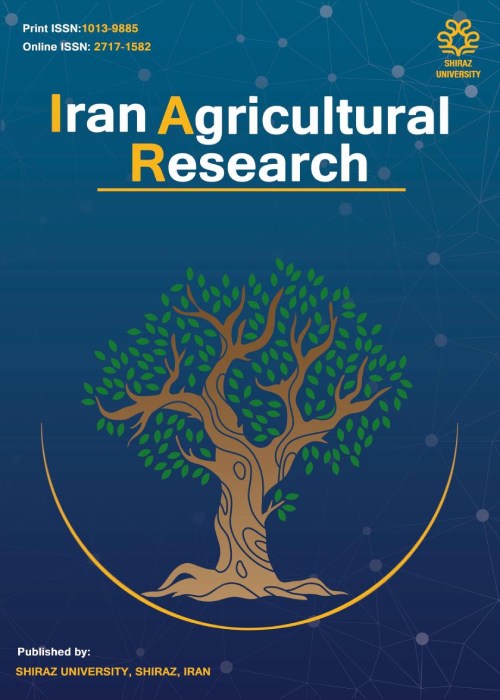Potassium pools equilibration during growth stages of two rapeseed cultivars under drought stress
Author(s):
Article Type:
Research/Original Article (دارای رتبه معتبر)
Abstract:
Different soil potassium (K) pools including soluble, exchangeable and non-exchangeable in surface and subsurface soils may be totally used by canola roots at different growth stages under drought conditions. A field experiment was conducted for one growing season (2013-2014) to study K pools changes during growth stages of two rapeseed cultivars under drought. The experiment was arranged in a randomized complete block design with four factors including different stages of rapeseed growth (before planting, seedling, stem elongation, flowering, grain filling and harvesting), drought (full irrigation, drought from flowering and silique formation), rapeseed cultivars (Sarigol and RGS) and soil depths (0-15 and 15-30 cm). Soil samples were collected and soluble, exchangeable and non-exchangeable K were determined. Results showed that the contents of soluble and non-exchangeable K (NEK) decreased during the growth stages (22 and 198 mg kg-1, respectively) while the contents of exchangeable K increased until stem elongation (57 mg kg-1) and then remained constant. Decrease in the contents of HNO3-extractable K (sum of soluble, exchangeable and non-exchangeable K) in the topsoils was significantly more than that in the subsoils (198 vs. 142 mg kg-1). Drought also had a significant effect on K pools distribution. Drought from flowering decreased the contents of NEK and HNO3-extractable K; however, drought from silique formation had no significant effect on the contents of the different K forms. Type of rapeseed cultivar had no significant effect on K pools distribution. It is concluded that a severe decrease in HNO3-extractable K occurs at the flowering stage (170 mg kg-1) and it must be considered for K fertilizers management. Decrease in NEK during the rapeseed growth supports the hypothesis that this form of K may be released during a growth season and this large pool of K may be considered in K fertility management and fertilizer recommendations. Generally, K uptake by Sarigol cultivar was significantly higher than that by RGS cultivar (177.7 vs. 129.4 kg ha-1). Potassium uptake by rapeseed decreased by drought and this decrease was more pronounced by drought from silique formation (more than 40% decrease in K uptake).
Keywords:
Language:
English
Published:
Iran Agricultural Research, Volume:37 Issue: 1, Winter and Spring 2018
Pages:
1 to 10
magiran.com/p1852482
دانلود و مطالعه متن این مقاله با یکی از روشهای زیر امکان پذیر است:
اشتراک شخصی
با عضویت و پرداخت آنلاین حق اشتراک یکساله به مبلغ 1,390,000ريال میتوانید 70 عنوان مطلب دانلود کنید!
اشتراک سازمانی
به کتابخانه دانشگاه یا محل کار خود پیشنهاد کنید تا اشتراک سازمانی این پایگاه را برای دسترسی نامحدود همه کاربران به متن مطالب تهیه نمایند!
توجه!
- حق عضویت دریافتی صرف حمایت از نشریات عضو و نگهداری، تکمیل و توسعه مگیران میشود.
- پرداخت حق اشتراک و دانلود مقالات اجازه بازنشر آن در سایر رسانههای چاپی و دیجیتال را به کاربر نمیدهد.
In order to view content subscription is required
Personal subscription
Subscribe magiran.com for 70 € euros via PayPal and download 70 articles during a year.
Organization subscription
Please contact us to subscribe your university or library for unlimited access!


